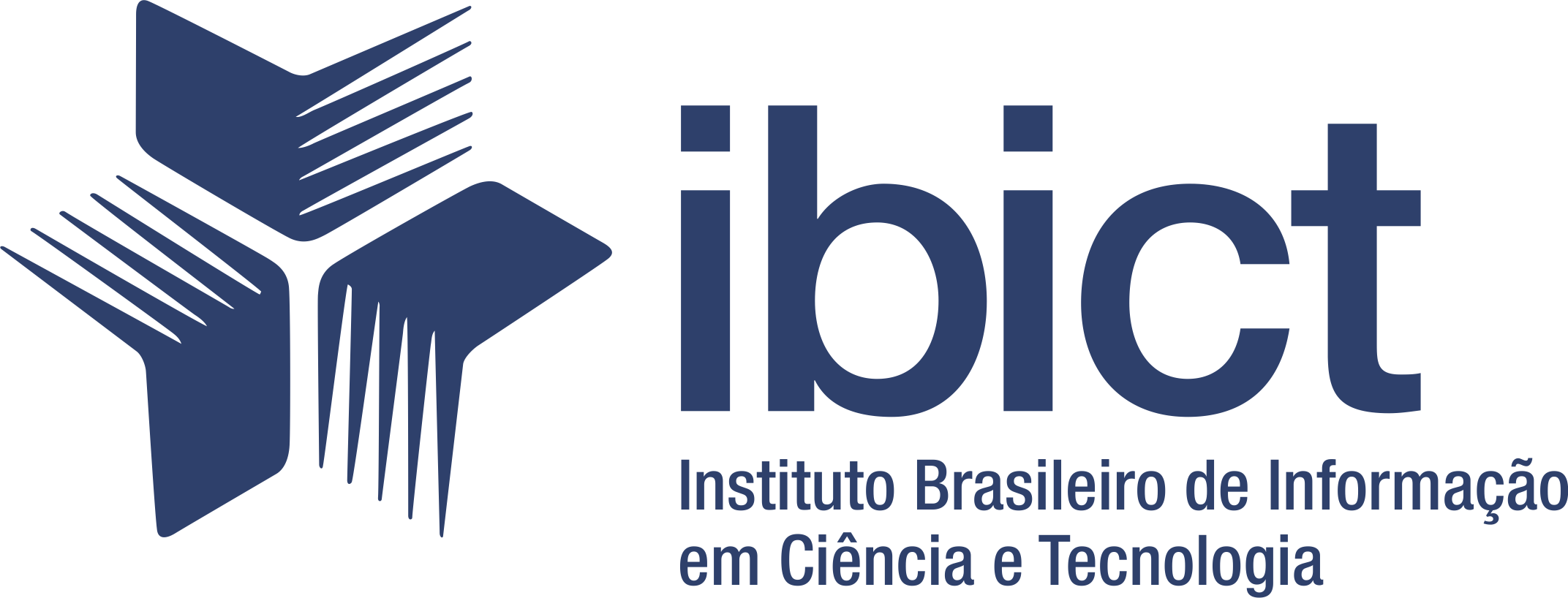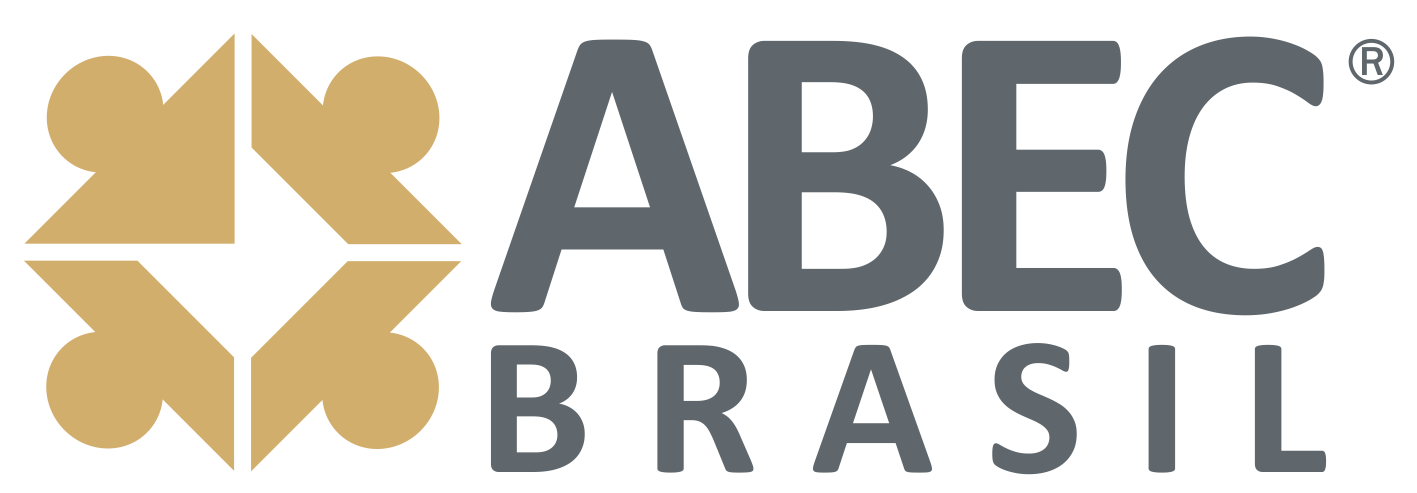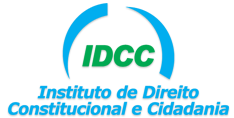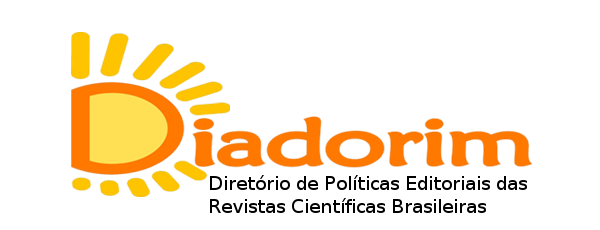Jornalismo na web e clonagem biológica: Um estudo sobre o tema clonagem nos cadernos de ciência online dos jornais O Estado de São Paulo e Folha de São Paulo
DOI:
https://doi.org/10.21880/ius%20gentium.v7i4.93Resumo
RESUMO
A clonagem, assim como outras técnicas biológicas, são alvosdo interesse econômico. O debate bioético sobre o tema é atual e vive emconstante refluxo. Ao parece, o debate e seu desdobramento estão longe do fim.Nesse estudo, tabulamos dados sobre o tema clonagem nos cadernos de ciênciaon-line do jornal Folha de São Paulo e do jornal O Estado de São Paulo. Com asinformações, fizermos o cruzamento de dados, conforme o caderno de códigosdescrito por Quadros (2010). Chegamos a três resultados. O primeiro, ainfluência das agências de notícia é hegemônica. O segundo, há pouca diferençaentre a cobertura dos dois jornais. Por fim, podemos dizer também que há umapadronização quanto ao enquadramento.
Palavras-chave: Clonagem. Jornalismo científico. Internet.
ABSTRACT
Cloning, aswell as other biological techniques, are targets of economic interest. Thebioethical debate on the theme is a currently issue and it lives in a constantreflux. It seems that the debate and itsunfolding are far from the end. In this study, we tabulated data about thetopic cloning in online science books of the newspapers Folha de São Paulo and O Estado de São Paulo. With theinformation, we crossed data, accordingto the code book described by Quadros (2010). We obtained three results. Thefirst, the influence of the news agencies is hegemonic. The second, there is little difference betweenthe coverage of the two newspapers. Finally, we can also say that there is astandardization regarding the framework.
Key words: Cloning. Science journalism.Internet.
RESUMEN
La clonación, asícomo otras técnicas biológicas, son objetivos de interés económico. El debatebioético sobre el tema es actual y vive en un constante reflujo. Así, el debatey su desdoblamiento están lejos del fin. En este estudio, tabulamos los datosacerca del tema de la clonación en los cuadernos de ciencia on line delperiódico “Folha de São Paulo” y del periódico “O Estado de São Paulo”. Con lasinformaciones, hicimos el cruce de datos, conforme el cuaderno de los códigosdescritos por Quadros (2010). Llegamos a tres resultados: en primer lugar, lainfluencia de las agencias de noticias es hegemónica; en segundo, hay pocadiferencia entre la cobertura de dos periódicos y, por último, también se puededecir que también hay una normalización en lo que respecta al encuadramiento.
Palabras-clave:Clonación. Periodismo científico. Internet.
Downloads
Referências
ALBAGLI, S. Divulgação científica: informação científica para a cidadania? Ciência da Informação, Brasília, v. 25, n. 3, set/dez. 2000. Disponível em:
<http://revista.ibict.br/cienciadainformacao/index.php/ciinf/article/viewFile/465/424>. Acesso em: 01 out. 2012.
BROOKES, M. Fique por dentro da genética. 2a ed., São Paulo: Cosac e Naify Edições, 2003.
BRUNER, N. In defense of cloning. Disponível em:
<http://csus.edu/indiv/g/gaskilld/ethics/Nathan%20Bruner.pdf>. Acesso em: 25 set. 2012.
BUCCHI, M. Of deficits, deviations and dialogues: Theories of public communication of science. In: BUCCHI, M.; TRENCH, B. (Eds.). Handbook of Public Communication of Science and Technology. Routledge, 2008. pp. 57-76. Disponível em: <http://www.bpatc.org.bd/elibrary/files/12713227600415386179.pdf#page=72>. Acesso em: 29 set. 2012.
CANAVILHAS, J. Webnoticia: Propuesta de modelo periodístico para la www. Covilhã: Livros LabCom, 2007. Disponível em: <http://ubithesis.ubi.pt/bitstream/10400.6/659/1/canavilhas-webnoticia-final.pdf>. Acesso em: 15 out. 2012.
CHARAUDEAU, P. Discurso das mídias. São Paulo: Contexto, 2006.
CHRISTOFOLETTI, R. Ética no jornalismo. São Paulo: Contexto, 2008.
CORREIA, C. P. Clones humanos. Nossa autobiografia coletiva. Rio de Janeiro: Rocco, 2002.
DEUZE, M. Understanding journalism as newswork: How it changes, and how it remains the same. Westminster Papers in Communication and Culture , v. 5, n.2. 2009. Disponível em: <http://www.westminster.ac.uk/__data/assets/pdf_file/0006/20022/002WPCC-Vol5-No2-Mark_Deuze.pdf>. Acesso em: 14 out. 2012.
DICKINSON, R. Accomplishing Journalism: Towards a Revived Sociology of a Media Occupation. Cultural Sociology, v., n.2. 2007, pp. 189-208. Disponível em: <http://cus.sagepub.com/content/1/2/189.full.pdf>. Acesso em: 20 set. 2012.
DICKINSON, R; SALTZIS, K. Inside the changing newsroom: journalists’ responses to media convergence. Aslib Proceedings, v. 60, n.3. 2008. Disponível em: <http://www.emeraldinsight.com/journals.htm?
articleid=1728132&show=abstract>. Acesso em: 15 out. 2012.
DOMINGO, D. et al. Four dimensions of journalistic convergence: A preliminary approach to current media trends at Spain. In: INTERNATIONAL SYMPOSIUM ON ONLINE JOURNALISM, 8., 2007, Austin, Texas. Disponível em: <http://journalism.utexas.edu/onlinejournalism/2007/papers/Domingo.pdf>. Acesso em: 21 set. 2012.
FESTINGER, Leon. Teoria da dissonância cognitiva. Rio de Janeiro: FGV, 1975.
FORTUNATI, L. et al. The Influence of the Internet on European Journalism. Journal of Computer-Mediated Communication, v.14, n. 2009. 2009. Disponível em: <http://www.mediastudies.lt/sites/default/files/Fortunati%20et%20al.-JCMC-2009.pdf>. Acesso em: 24 out. 2012.
FUNDAÇÃO HEINRICH BÖLL. O que é biopolítica. Rio de Janeiro, 2006. Disponível em: < http://br.boell.org/downloads/Cartilha_biopolitica.pdf>. Acesso em: 08 de outubro de 2012.
GALBRAITH, J. K. A era da incerteza. 7. ed. São Paulo: Pioneira, 1986.
GASMAN, D. The scientific origins of national socialism. Transaction pub, 2004.
GAZZANIGA, M. S.; HEATHERTON, T. F. Ciência Psicológica. Mente, cérebro e comportamento. São Paulo: Artmed Editora, 2005.
GONZÁLEZ-SILVA, M. Human genetics in the press: Three lessons from a case study. In: BARAHONA, A.; RHEINBERGER, H.; SUAREZ-DÍAS,E. (Eds.). The Hereditary Hourglass. Genetics and Epigenetics, 1868-2000. 2010. pp. 149-158.
Disponível em: <http://www.mpiwg-berlin.mpg.de/en/forschung/Preprints/P392.PDF#page=151>. Acesso em: 29 set. 2012.
GRIFFITHS, A. J. F.; GELBART, W. M.; MILLER, J. H.; LEWONTIN, R. C. Genética Moderna. Rio de Janeiro: Guanabara Koogan, 2001.
HAVILAND, W. A.; McBRIDE, B.; PRINS, H. E. L.; WALRATH, D. Princípios de antropologia. São Paulo: Cengage Learning, 2011.
HELLSTEN, I. Popular Metaphors of Biosciences: Bridges over Time? Configurations, v. 16, n. 11. 2008. Disponível em:
<http://130.102.44.246/login?auth=0&type=summary&url=/journals/configurations/v016/16.1.hellsten.pdf>. Acesso em: 01 out. 2012.
HOLLIMAN, R. Media Coverage of Cloning: A Study of Media Content, Production and Reception. Public Understanding of Science April, v. 13, n. 2, Abr. 2004. Disponível em: <http://pus.sagepub.com/content/13/2/107.short>. Acesso em: 08 out. 2012.
HYDE, J. News Coverage of Genetic Cloning: When Science Journalism Becomes Future-Oriented Speculation. Journal of Communication Inquiry, v.30, n.3, Jul. 2006. Disponível em:
<http://estudijas.lu.lv/pluginfile.php/202365/mod_resource/content/0/Hyde_News_Coverage_of_Genetic_Cloning.pdf>. Acesso em: 08 de out. 2012.
JENSEN, E. Genetic futures and the media. The Encyclopedia of Life Sciences, Chichester: John Wiley Publishing. 2009. Disponível em :
<http://isotope.open.ac.uk/files/Genetics%20and%20Media%202.0-Encyclopedia%20of%20Life%20Sciences.pdf>. Acesso em: 03 de out. 2012.
______. Between credulity and scepticism: envisaging the fourth estate in 21 st-century science journalism. Media, Culture & Society, v. 32, n.4. 2010. Disponível em: <http://www2.warwick.ac.uk/fac/soc/sociology/staff/academicstaff/jensen/homepage/between_credulity_and_scepticism-_mcs-published_version.pdf>. Acesso em: 03 out. 2012.
JOHNSON, R. Agressão no homem e nos animais. Rio de Janeiro: Editora Interamericana, 1972.
KHUN, T. S. A Estrutura das Revoluções Científicas. 2a ed., São Paulo: Perspectiva, 1978.
KLOTZKO, A. J. Dolly, cloning, and the public misunderstanding of science: A challenge for us all. Cambridge Quarterly of Healthcare Ethics, v. 7, n.2. 1998. Disponível em: <http://journals.cambridge.org/action/displayAbstract?fromPage=online&aid=46199>. Acesso em: 08 out. 2012.
KNOLL, F. C.; MACHADO, A. C.; OLIVEIRA, M.; PORTES, M.V.; RIOS, A. O.; SILVA, T. C. F. Jornalismo científico: O compromisso de divulgar ciência à sociedade – A comunicação entre jornalistas e pesquisadores e a responsabilidade social na disseminação de informações científicas. Revista Publicatio UEPG, Paraná, v.13, n. 2, abr. 2005. Disponível em: < http://www.revistas2.uepg.br/index.php/sociais/article/view/2785>. Acesso em: 25 set. 2012.
LAZER, D. et al. Life in the network: the coming age of computational social science. Science, v. 323, n. 5915, 6 fev. 2009. Disponível em: < http://www.ncbi.nlm.nih.gov/pmc/articles/pmc2745217/>. Acesso em: 24 out. 2012.
MAIGRET, E. Sociologia da comunicação e das mídias. São Paulo: Senac, 2010.
MERTON, R. K. Las prioridades em los descubrimentos científicos. In: La sociologia de la ciência, v. 2. Alianza Universidad,1985.
MIAH, A. Genetics, cyberspace and bioethics: Why not a public engagement with ethics? Public Understanding of Science, v. 14, n.4. 2005. Disponível em:
<http://www.tara.tcd.ie/jspui/bitstream/2262/51803/1/PEER_stage2_10.1177%252F0963662505056616.pdf>. Acesso em: 03 out. 2012.
MINI, S. Genetics and biotechnologies in Italian mass media. Journal of Science Communication, v. 4, n.3. 2005. Disponível em: <http://jcom.sissa.it/archive/04/03/A040303/jcom0403(2005)A03.pdf>. Acesso em: 29 set. 2012.
NASCIMENTO, S. Nasce em SP o primeiro clone equino do Brasil. Revista Globo Rural, São Paulo, 25 set. 2012. Disponível em: <http://revistagloborural.globo.com/Revista/Common/0,,EMI319660-18530,00-NASCE+EM+SP+O+PRIMEIRO+CLONE+EQUINO+DO+BRASIL.html>. Acesso em: 25 set. 2012.
O’MALLEY, C.; PINHOLSTER, G. EurekaAlert! Survey confirms challenges for science communicators in the post-print era. Journal of Science Communication, v. 5, n. 3. 2006. Disponível em: <http://jcom.sissa.it/archive/05/03/Jcom0503(2006)C05/Jcom0503(2006)C01/Jcom0503(2006)C01.pdf?pagewanted=all>. Acesso em: 30 set. 2012.
PINHO, J. B. Jornalismo na internet: Planejamento e produção da informação on-line. São Paulo: Summus, 2003.
PUTNAM, R. D. Comunidade e Democracia: a experiência da Itália moderna. 3 ed. Rio de Janeiro: FGV, 2002.
QUADROS, D. Mídia impressa e as eleições em Curitiba: convergências e discrepâncias entre a cobertura eleitoral da Gazeta do Povo e a de O Estado do Paraná nas eleições de 2008. In: CERVI, E. U. (Org.). Eleições e mídia local: Desvendando a democracia de massa em disputas municipais. Paraná: Toda Palavra Editora, 2010. pp. 117-122.
RIDDLEY, M. O que nos faz humanos. Genes, natureza e experiência. São Paulo: Editora Record, 2004.
SCHNABEL, U. God’s formula and Devil’s contribution: Science in the press. Public Understanding of Science, v.12, pp. 255- 259, 2003. Disponível em:
<http://www.siga.fiocruz.br/arquivos/ss/documentos/editais/21_Texto%20Schnabel.pdf>. Acesso em: 27 set. 2012.
SCHRAMM, F. R. A clonagem humana: Uma perspectiva promissora. Disponível em:
<http://www.ghente.org/temas/clonagem/Clonagem%20promissora.pdf>. Acesso em: 25 set. 2012.
TRAQUINA, N. Teorias do jornalismo II: a tribo jornalística – uma comunidade interpretativa transnacional. 2, ed. v. 2. Florianópolis: Insular, 2008.
WAIZBORT, R. A era do controle biológico: Quando a cultura invade a natureza – Uma abordagem darwinista. Cadernos de Pesquisa Interdisciplinar em Ciências Humanas, Santa Catarina, v. 2, n. 17, abr. 2001. Disponível em: <http://www.periodicos.ufsc.br/index.php/
cadernosdepesquisa/article/view/936/4398>. Acesso em: 25 set. 2012.
Downloads
Publicado
Como Citar
Edição
Seção
Licença
Os direitos autorais dos artigos publicados na Revista são do autor e do periódico, com os direitos de primeira publicação para a Revista. Em virtude de aparecerem nesta revista de acesso público, os artigos são de uso gratuito, com atribuições próprias, com aplicações educacionais e não comerciais, de acordo com o creative commons.








